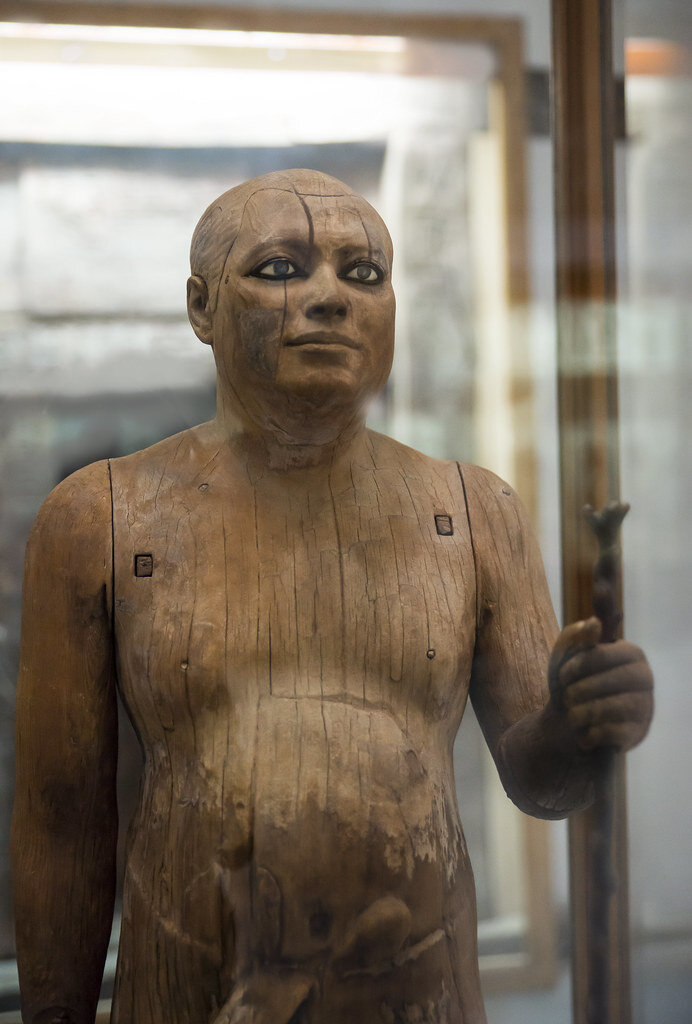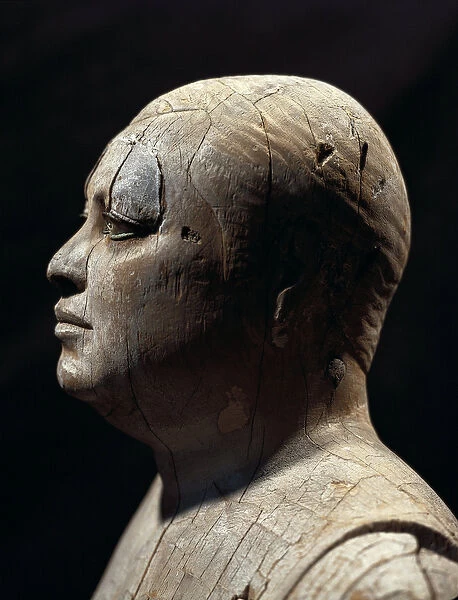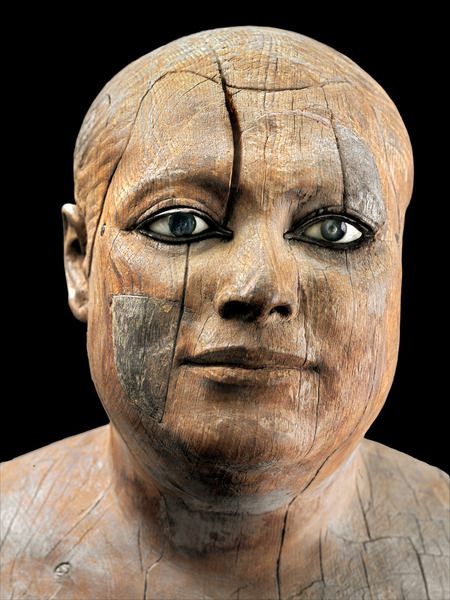Introduction
The statue of Ka-Aper, dating back to the Old Kingdom of ancient Egypt, is a remarkable example of both craftsmanship and cultural significance. Discovered in Saqqara, this wooden sculpture has intrigued scholars and admirers alike for its lifelike appearance and artistic mastery. Commonly referred to as “Sheikh el-Balad” by locals, the statue stands as a testament to the skill and religious beliefs of the Egyptians over 4,000 years ago.
Historical Context
Ka-Aper’s statue was crafted during the 4th or 5th Dynasty of Egypt, around 2613–2345 BCE. This period, known as the Old Kingdom, was an era when art, culture, and architecture flourished in Egypt, with major developments such as the construction of the Great Pyramids of Giza. The statue was found in Saqqara, a necropolis near Memphis, which served as the burial ground for Egyptian elites. Saqqara is famous for housing the Step Pyramid of Djoser and several important tombs from various periods of Egyptian history.

The statue is believed to represent Ka-Aper, who was likely an important official or priest. His statue, along with many others, was buried in a tomb, fulfilling the Egyptian practice of ensuring that statues accompanied the deceased into the afterlife. The Egyptians believed that these statues acted as vessels for the souls of the deceased and offered them eternal presence.
The Artistic Significance
The statue is made from sycamore wood, a popular material in ancient Egyptian statuary. However, what truly sets it apart is the level of realism achieved by the artist:
- Eyes: The eyes of the statue are perhaps its most captivating feature. Crafted using rock crystal for the pupils, with copper and quartz for the sclera and eyelids, they give the statue a lifelike, almost piercing gaze. This realism is rare in ancient statuary and reflects the precision of Old Kingdom artisans.
- Naturalistic Detail: Unlike the more formal and idealized depictions of Egyptian royalty, Ka-Aper’s statue is more natural in its stance and features. He is depicted standing, holding a staff, with a body posture that reflects a more relaxed and human-like figure. His plump physique and rounded features suggest that Ka-Aper was a person of high status, likely enjoying a comfortable life of wealth.
“Sheikh el-Balad”: A Unique Nickname
When the statue was uncovered by local workers during excavations in Saqqara, they were struck by how much it resembled their own village leader. The locals affectionately dubbed the statue “Sheikh el-Balad”, which means “village chief” in Arabic. This nickname endures today and highlights the statue’s relatable and human qualities. It’s fascinating to think that, even after thousands of years, people can see something familiar in this ancient sculpture.

Cultural and Religious Significance
The role of statues in ancient Egyptian culture was profoundly spiritual. Egyptians believed that these statues could serve as stand-ins for the deceased in the afterlife, ensuring that their soul (or Ka) would live on. In the case of Ka-Aper, the statue would have symbolized his continued existence, allowing him to partake in the offerings and rituals conducted in his tomb.

Additionally, the craftsmanship and attention to detail in the statue signify the high regard in which Ka-Aper was held. The lifelike features of the statue not only reflect artistic mastery but also the deep connection between the living and the afterlife in Egyptian culture. This was not just a work of art; it was a vital part of ancient Egyptian funerary practices and beliefs about eternity.
Preservation and Modern Display
Ka-Aper’s wooden statue is now part of the collection at the Egyptian Museum in Cairo, where it remains one of the most admired works from the Old Kingdom. Despite its age, the statue is well-preserved, offering modern viewers a direct link to the artistic and cultural legacy of ancient Egypt.
Interestingly, much of the wooden statuary from this period survived, possibly due to favorable preservation conditions or because of a growing trend in using wood for tomb sculptures during the 5th and 6th Dynasties.

Conclusion
The statue of Ka-Aper is a remarkable piece of ancient Egyptian art, representing not just a man, but an entire worldview steeped in reverence for the afterlife and the power of realistic imagery. Its nickname, “Sheikh el-Balad,” continues to reflect the universal human qualities captured in this ancient wooden figure, bridging a gap between the past and the present. The lifelike depiction, incredible craftsmanship, and spiritual significance of the statue make it an enduring symbol of both the artistic talent and the deep religious traditions of ancient Egypt.
Through its intricate details, the statue offers a glimpse into the skill of Old Kingdom artisans and the role that art played in bridging the mortal and divine realms. It continues to fascinate scholars and visitors alike, standing as a masterpiece that transcends time.

